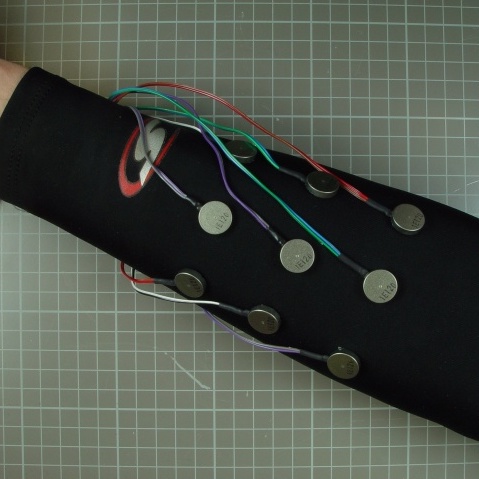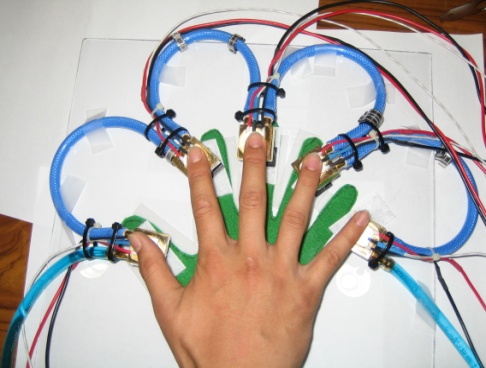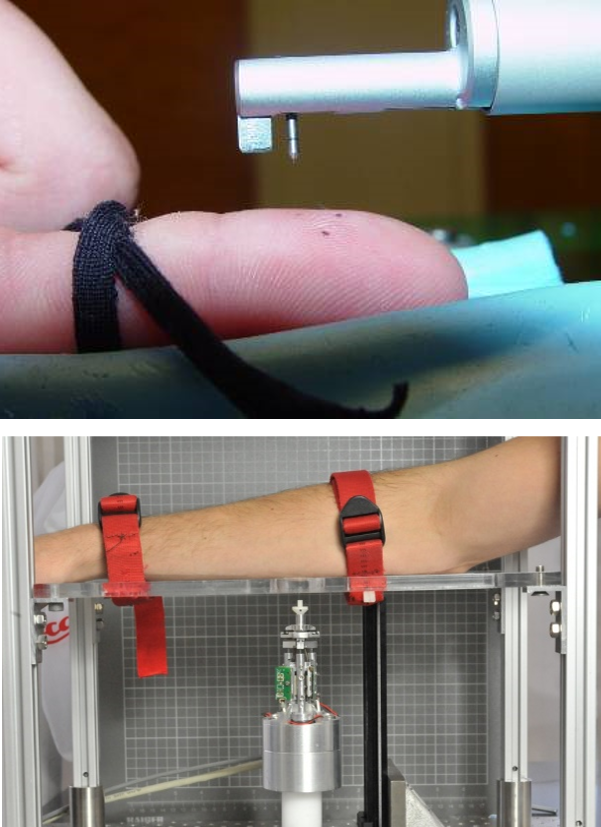Our work on tactile displays involves research on characterizing the properties of different actuators used in displays, building and testing different types of tactile displays, evaluating the mechanical properties of skin so as to quantify its responses to vibration and psychophysical studies in which we measure perceptual responses to mechanical stimulation of the skin.
We have built displays that can be mounted on the hand, arm, leg or torso and have shown that by varying the spatial and temporal properties of vibrotactile stimulation we can create tactile communication systems.
Learn More

